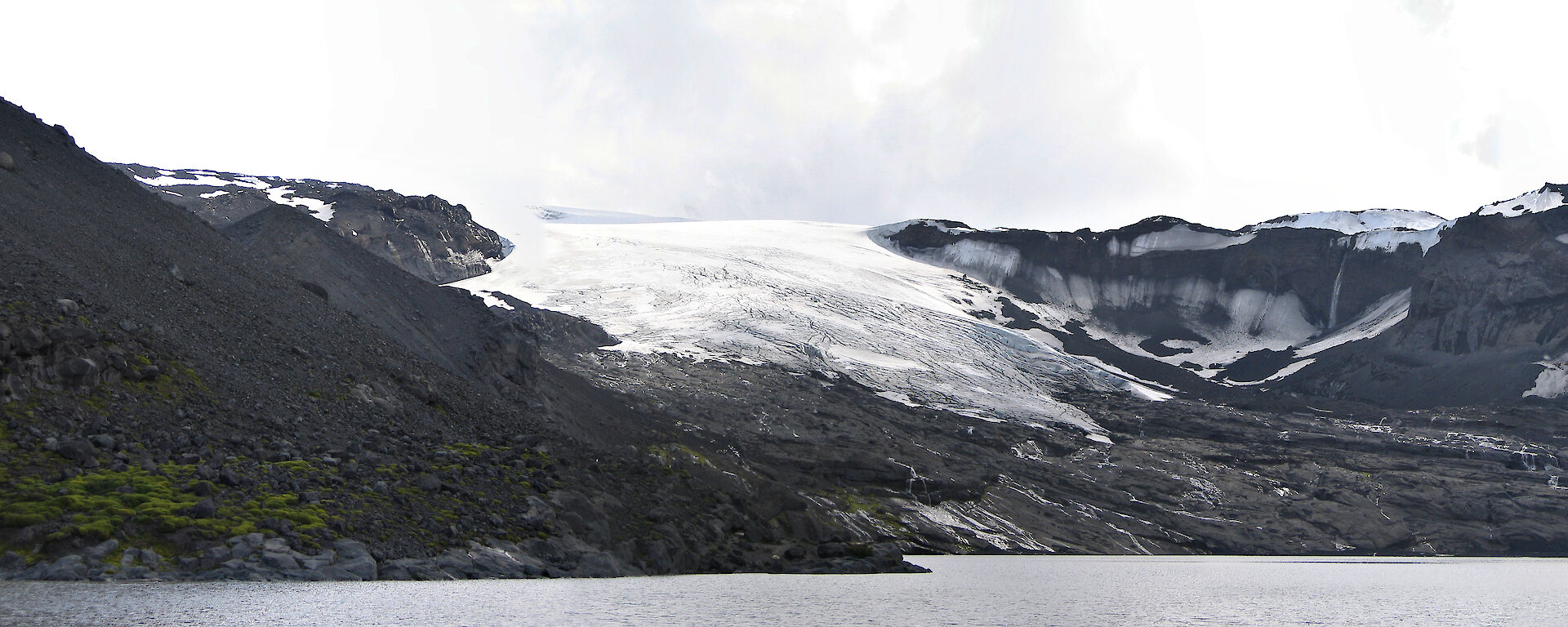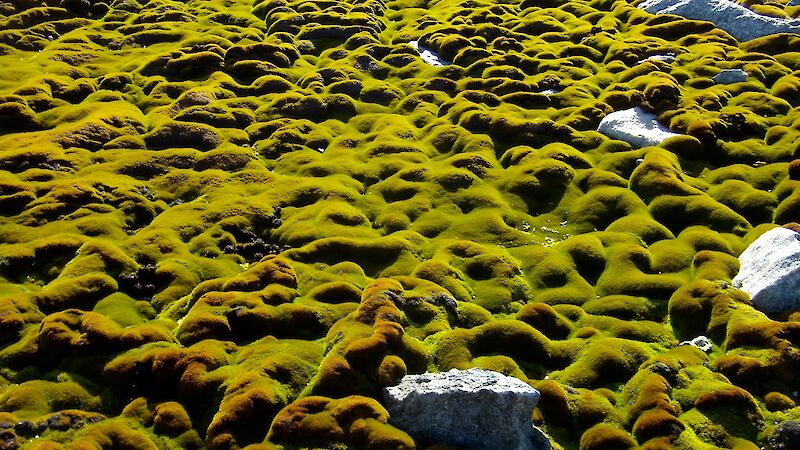Antarctica and the subantarctic islands are undergoing measurable climate change and the Antarctic Peninsula has experienced greater climatic warming than any other region on the planet. Retreating glaciers, such as those on Heard Island, are exposing new habitat. Antarctic terrestrial, lake and coastal marine ecosystems are likely to be sensitive to climate change because they are affected by climate — and temperature — sensitive environmental processes such as snow and ice cover, wind and soil erosion. These ecosystems are also vulnerable to introduced species and persistent pollutants that reach Antarctica from other parts of the world through the atmosphere.
These ecosystems can potentially provide an early warning of the impact of climate change. Understanding these changes is important to ensure that environmental management measures for the region accommodate the changing environment.
Our research aims to:
- identify, track, attribute and predict ecosystem change as the basis for vulnerability assessments and adaptive management
- provide sentinels of more widespread change in both the Antarctic and other parts of the world.
Key research questions include:
- Are changes that are attributable to global change, occurring in Antarctic and subantarctic terrestrial and nearshore ecosystems?
- What are the key drivers and pathways of climate change impacts on Antarctic and subantarctic ecosystems?
- Which species, processes and/or systems are suitable for tracking the impacts of environmental change?
- What are the sensitivities of Antarctic and subantarctic biodiversity to environmental stressors, and are there critical thresholds that would give rise to irreversible impacts?
- How has the biodiversity of Antarctic and subantarctic terrestrial and nearshore areas changed in the past and how can this help us predict future change in a changing world?
To test predictions of further ecosystem impacts as a result of climate change we need a long-term, integrated observing system. Ecosystems that could contribute to a network of observing sites include:
- the moss beds at Casey, which are highly sensitive to water availability (which is itself climate sensitive)
- the nearshore marine environment at Casey, which is an ideal location for studying the effects of sea ice on coastal marine communities
- the lakes of the Vestfold Hills near Davis, which represent the most extensive range of lake types within a small area in Antarctica
- the subantarctic Macquarie and Heard islands, which are in a zone of rapid environmental change.
Our research is working towards developing such an observing system.
Research also involves:
- experimental and field studies to understand the response of species to extreme environmental conditions such as temperature, water availability, carbon dioxide concentrations and ultraviolet light levels
- analysis of palaeo-records of past climate (such as marine sediments, soils and animal breeding and haul-out sites) to determine links between past climate change and significant ecosystem changes
- data modelling to assess ecosystem vulnerabilities, to trace the accumulation of globally transported pollutants and to predict future change.



